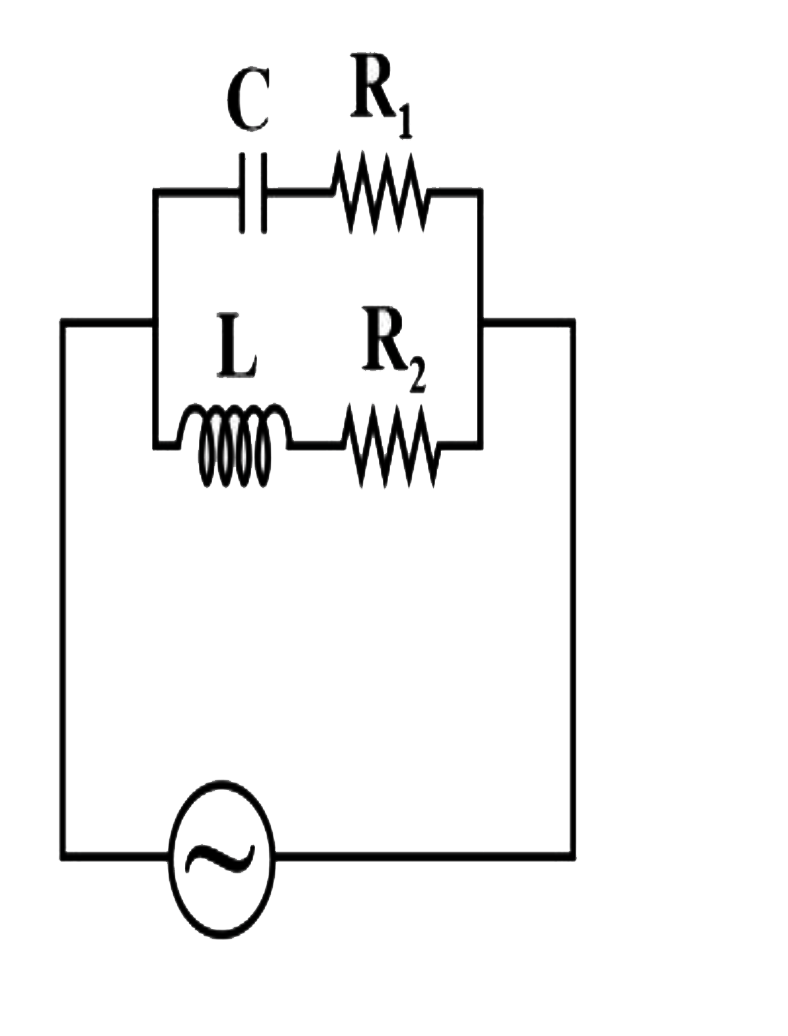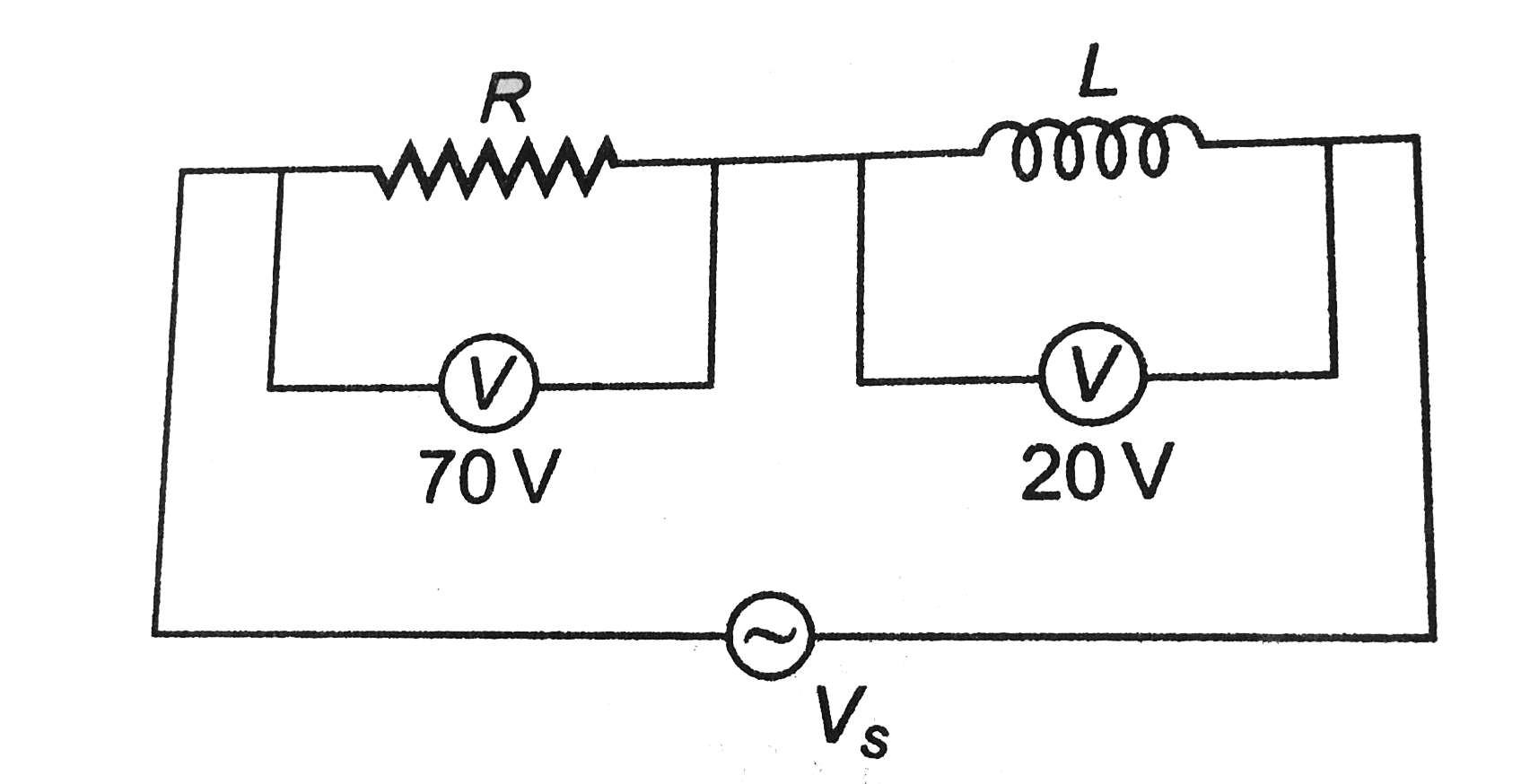In a series resonant circuit, the ac voltage across resistance R, inductance L and capacitance C are VR=4V,VL=10V and VC=7V respectively. Find the voltage applied to the circuit.
To find the voltage applied to the series resonant circuit with the given voltages across the resistor (R), inductor (L), and capacitor (C), we will follow these steps:
Step 1: Identify the given voltages
We have the following voltages:
- Voltage across the resistor, VR=4V
- Voltage across the inductor, VL=10V
- Voltage across the capacitor, VC=7V
Step 2: Understand the phase relationships
In an AC circuit, the voltages across the inductor and capacitor are out of phase with each other. The voltage across the resistor is in phase with the current. Therefore, we can represent these voltages as vectors:
- VR is along the horizontal axis.
- VL is along the vertical axis pointing upwards (inductive reactance).
- VC is along the vertical axis pointing downwards (capacitive reactance).
Step 3: Calculate the net voltage across the inductor and capacitor
Since VL and VC are in opposite directions, we can find the net voltage across them:
VLC=VL−VC=10V−7V=3V
Step 4: Construct the right triangle
Now, we can visualize the voltage across the resistor and the net voltage across the inductor and capacitor as a right triangle:
- One side (adjacent) is VR=4V
- The other side (opposite) is VLC=3V
Step 5: Apply the Pythagorean theorem
To find the total voltage V applied to the circuit, we can use the Pythagorean theorem:
V=√V2R+V2LC
Substituting the values:
V=√(4V)2+(3V)2=√16+9=√25=5V
Step 6: Conclusion
The voltage applied to the circuit is:
5V
We have the following voltages:
- Voltage across the resistor, VR=4V
- Voltage across the inductor, VL=10V
- Voltage across the capacitor, VC=7V
In an AC circuit, the voltages across the inductor and capacitor are out of phase with each other. The voltage across the resistor is in phase with the current. Therefore, we can represent these voltages as vectors:
- VR is along the horizontal axis.
- VL is along the vertical axis pointing upwards (inductive reactance).
- VC is along the vertical axis pointing downwards (capacitive reactance).
Since VL and VC are in opposite directions, we can find the net voltage across them:
VLC=VL−VC=10V−7V=3V
Now, we can visualize the voltage across the resistor and the net voltage across the inductor and capacitor as a right triangle:
- One side (adjacent) is VR=4V
- The other side (opposite) is VLC=3V
To find the total voltage V applied to the circuit, we can use the Pythagorean theorem:
V=√V2R+V2LC
Substituting the values:
V=√(4V)2+(3V)2=√16+9=√25=5V
The voltage applied to the circuit is:
5V
Similar Questions
In an a.c. circuit the voltage across an inductance and resistance, joined in series, are 120 V and 160 V respectively. The total voltage applied across the combined circuit is …………..
View SolutionIn LCR circuit, the voltage across the terminals of a resistance, inductance & capacitance are 40V, 30V & 60V, then the voltage across the main source will be
View Solution
Knowledge Check
In a series resonant circuit, the ac, voltage across resistance R, inductance L and capacitance Care 5V, 10V and 10V, respectively. The ac. voltage applied to the circuit will be
A20 VB10 VC5 VD25 VIn a series resonant circuit, the AC voltage across resistance R, inductance L, and capacitance C are 5V,10V and 10V respectively. The AC voltage applied to the circuit will be
A20VB10VC5VD25VIn the given circuit the R.M.S values of voltages across the capacitor C, inductor L and resistor R1 are 12V, 10V and 5 V respectively. Then the peak voltage across R2 is
 A7√2VB√69VC√138VDnone of these
A7√2VB√69VC√138VDnone of these
In series L−C−R circuit, voltage drop across resistance is 8V, across inductor is 6V and across capacitor is 12V. Then,
View SolutionThe potential differences across the resistance, capacitance and inductance are 80V, 40V and 100V respectively in an L-C-R circuit. The power factor of this circuit is
View SolutionThe potential differences across the resistance, capacitance and inductance are 80V,40V and 100V respectively in an L−C−R circuit. The power factor of this circuit is
View SolutionThe potential defferences across the resistance capacitance and indutance are 80 V, 40 V and 100 V respectively in an L-C-R circuit. The power factor of this circuit is
View SolutionThe adjoining figure shows an AC circuit with resistance R, inductance L and source voltage VS. Then

View Solution
